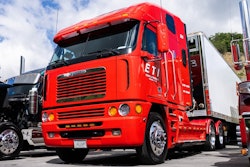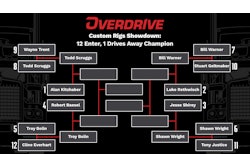Towards a strong bottom line
Last month I wrote about the importance of setting concise written goals. If you want to set a goal of making more money, first you need to know how much money you’re really making. You need to be able to measure the bottom line.
What does bottom line really mean? To generate a profit and loss statement, first list total income (gross revenue) at the top. This is the money you generate in your business before subtracting expenses. Under that line would go expenses – costs like equipment payments, fuel, maintenance, tolls, etc.
Total those business expenses, subtract them from gross revenue, and the result is what’s left on the bottom line – net income, or profit.
Towards a strong bottom line
Last month I wrote about the importance of setting concise written goals. If you want to set a goal of making more money, first you need to know how much money you’re really making. You need to be able to measure the bottom line.
What does bottom line really mean? To generate a profit and loss statement, first list total income (gross revenue) at the top. This is the money you generate in your business before subtracting expenses. Under that line would go expenses – costs like equipment payments, fuel, maintenance, tolls, etc.
Total those business expenses, subtract them from gross revenue, and the result is what’s left on the bottom line – net income, or profit.
After helping owner-operators run their businesses for over 15 years, I’m still surprised at the truckers who have never generated a profit and loss (P&L) statement. Running your business without knowing your income and expenses every month is kind of like driving at 75 miles an hour in heavy fog: You’re not sure what’s going to happen next, but it won’t be pretty. If you are going to generate as much profit as possible, you need to know what the numbers are.
Then you need to focus on the bottom line. Look at a P&L statement and you’ll realize there’re only two ways to boost that bottom line.
Maximize revenue
You could improve gross revenue by getting paid more per mile. That’s not easy to accomplish in today’s environment, but still worth looking into. You could drive more miles, but given the constraints of hours of service regulations, this often isn’t an option. If you’re a leased operator, it might take changing carriers to accomplish either of these approaches.
But it’s more costly than you think – several thousand dollars – to jump to a new fleet, so I don’t recommend that unless you have done enough research to know that the change will be beneficial.
One thing I do recommend is studying rates and lanes to see how supply and demand affect rates. If load boards show there are 300 available flatbed loads in your location and only 130 posted trucks to move them, the rate will be higher and you’ll have more negotiating power with a shipper or a broker. If there are 100 flatbed loads posted and 400 trucks looking for freight, it’s just the opposite.
Develop a good understanding of supply and demand and know the spot market you are negotiating in. Shippers and brokers count on many small operators not having this information.
Minimize expenses
It takes a lot of revenue to boost the bottom line because of the expenses that are involved. That’s why boosting the bottom line by cutting costs is easier. Every dollar you saved goes straight into your pocket as profit.
Examine each line item on your P&L, but focus on your largest expenses first. Fuel is number one. If you’re not doing the practices widely known to save fuel, start now. These include idling less, reducing average highway speed, keeping tires at proper inflation and avoiding rapid starts and stops. Equipment payments and maintenance are two other key areas where you can cut expenses.
Remember these three things to maximize your income: written goals, a P&L statement, and a focus on the bottom line. With them, you’ll learn where you are now and how to get where you want to go.





